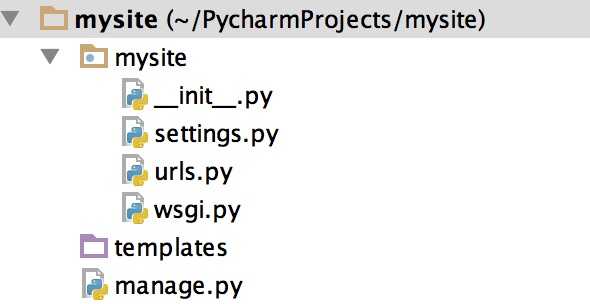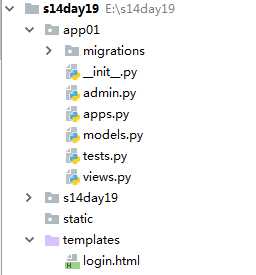标签:put type click socket 模板引擎 正则表达 target 配置 read
对于所有的Web应用,本质上其实就是一个socket服务端,用户的浏览器其实就是一个socket客户端。
#!/usr/bin/env python
#coding:utf-8
import socket
def handle_request(client):
buf = client.recv(1024)
client.send("HTTP/1.1 200 OK\r\n\r\n")
client.send("Hello, Seven")
def main():
sock = socket.socket(socket.AF_INET, socket.SOCK_STREAM)
sock.bind((‘localhost‘,8000))
sock.listen(5)
while True:
connection, address = sock.accept()
handle_request(connection)
connection.close()
if __name__ == ‘__main__‘:
main()
上述通过socket来实现了其本质,而对于真实开发中的python web程序来说,一般会分为两部分:服务器程序和应用程序。服务器程序负责对socket服务器进行封装,并在请求到来时,对请求的各种数据进行整理。应用程序则负责具体的逻辑处理。为了方便应用程序的开发,就出现了众多的Web框架,例如:Django、Flask、web.py 等。不同的框架有不同的开发方式,但是无论如何,开发出的应用程序都要和服务器程序配合,才能为用户提供服务。这样,服务器程序就需要为不同的框架提供不同的支持。这样混乱的局面无论对于服务器还是框架,都是不好的。对服务器来说,需要支持各种不同框架,对框架来说,只有支持它的服务器才能被开发出的应用使用。这时候,标准化就变得尤为重要。我们可以设立一个标准,只要服务器程序支持这个标准,框架也支持这个标准,那么他们就可以配合使用。一旦标准确定,双方各自实现。这样,服务器可以支持更多支持标准的框架,框架也可以使用更多支持标准的服务器。
WSGI(Web Server Gateway Interface)是一种规范,它定义了使用python编写的web app与web server之间接口格式,实现web app与web server间的解耦。
python标准库提供的独立WSGI服务器称为wsgiref。
from wsgiref.simple_server import make_server
def RunServer(environ, start_response):
start_response(‘200 OK‘, [(‘Content-Type‘, ‘text/html‘)])
return [bytes(‘<h1>Hello, web!</h1>‘, encoding=‘utf-8‘), ]
if __name__ == ‘__main__‘:
httpd = make_server(‘‘, 8000, RunServer)
print("Serving HTTP on port 8000...")
httpd.serve_forever()
Python的WEB框架有Django、Tornado、Flask 等多种,Django相较与其他WEB框架其优势为:大而全,框架本身集成了ORM、模型绑定、模板引擎、缓存、Session等诸多功能。
一、安装Django
pip install django
二、创建Django工程
三、程序目录

mysite
- mysite # 对整个程序进行配置
- init
- settings # 配置文件
- url # URL对应关系
- wsgi # 遵循WSIG规范,uwsgi + nginx
- manage.py # 管理Django程序:
- python manage.py
- python manage.py startapp xx
- python manage.py makemigrations
- python manage.py migrate
-templates #放置网页内容
# 运行Django功能
python manage.py runserver 127.0.0.1:8000
四、创建app
# 创建app
python manage.py startapp cmdb
python manage.py startapp openstack
python manage.py startapp xxoo....

app:
migrations 数据修改表结构
admin Django为我们提供的后台管理
apps 配置当前app
models ORM,写指定的类 通过命令可以创建数据库结构
tests 单元测试
views 业务代码
五、工程前的默认配置
1.配置模板的路径
settings.py
MIDDLEWARE = [
‘django.middleware.security.SecurityMiddleware‘,
‘django.contrib.sessions.middleware.SessionMiddleware‘,
‘django.middleware.common.CommonMiddleware‘,
# ‘django.middleware.csrf.CsrfViewMiddleware‘,
‘django.contrib.auth.middleware.AuthenticationMiddleware‘,
‘django.contrib.messages.middleware.MessageMiddleware‘,
‘django.middleware.clickjacking.XFrameOptionsMiddleware‘,
]
ROOT_URLCONF = ‘s14day19.urls‘
TEMPLATES = [
{
‘BACKEND‘: ‘django.template.backends.django.DjangoTemplates‘,
‘DIRS‘: [os.path.join(BASE_DIR, ‘templates‘)]
,
‘APP_DIRS‘: True,
‘OPTIONS‘: {
‘context_processors‘: [
‘django.template.context_processors.debug‘,
‘django.template.context_processors.request‘,
‘django.contrib.auth.context_processors.auth‘,
‘django.contrib.messages.context_processors.messages‘,
],
},
},
]
2.配置静态目录
新建static目录
settings.py中添加
STATIC_URL = ‘/static/‘
STATICFILES_DIRS = (
os.path.join(BASE_DIR,"static"),
)
下面就可以编写程序了
Django请求生命周期
-> URL对应关系(匹配) -> 视图函数 -> 返回用户字符串
-> URL对应关系(匹配) -> 视图函数 -> 打开一个HTML文件,读取内容
1.url
urls.py
from django.contrib import admin
from django.urls import path
from cmdb import views
urlpatterns = [
path(‘admin/‘, admin.site.urls),
path(‘login/‘, views.login),
path(‘home/‘, views.home),
]
2.基于正则表达式的url
re_path(‘detail-(\d+).html‘, views.detail), #一个函数对应多个页面 re_path(‘detail-(\d+)-(\d+).html‘, views.detail), #nid ,uid 一定按照顺序 re_path(‘detail-(?P<nid>\d+)-(?P<uid>\d+).html‘, views.detail), #绑定nid和uid

1 # def detail(request,nid): 2 # return HttpResponse(nid) 3 # # n = request.GET.get("nid") 4 # 5 # # info = USER_DICT[nid] 6 # # return render(request,"detail.html",{"info":info}) 7 # def detail(request, nid): 8 # info = USER_DICT[nid] 9 # return render(request,"detail.html",{"info":info}) 10 def detail(request,nid,uid): 11 print(nid,uid) 12 13 return HttpResponse(nid) 14 # info = USER_DICT[nid] 15 # return render(request,"detail.html",{"info":info})

1 <!DOCTYPE html> 2 <html lang="en"> 3 <head> 4 <meta charset="UTF-8"> 5 <title>Title</title> 6 </head> 7 <body> 8 {{ user_dict.user }} 9 <ul> 10 {% for k,row in user_dict.items %} 11 <li><a target="_blank" href="/detail-{{ k }}.html">{{ row.user }}</a></li> 12 {% endfor %} 13 </ul> 14 <!-- 15 <ul> 16 {% for k,row in user_dict.items %} 17 <li><a target="_blank" href="/detail/?nid={{ k }}">{{ row.user }}</a></li> 18 {% endfor %} 19 </ul> 20 --> 21 22 </body> 23 </html>

1 <!DOCTYPE html> 2 <html lang="en"> 3 <head> 4 <meta charset="UTF-8"> 5 <title>Title</title> 6 </head> 7 <body> 8 <h1>详细信息</h1> 9 <h3>用户名:{{ info.user }}</h3> 10 <h3>密码:{{ info.password }}</h3> 11 <h3>邮箱:{{ info.email }}</h3> 12 13 </body> 14 </html>
3.为路由映射设置名称
对URL路由关系进行命名, ***** 以后可以根据此名称生成自己想要的URL *****
urls.py
urlpatterns = [
path(‘indfasfasdfdex/‘, views.index, name="index1"),
re_path(‘ind/(\d+)/‘, views.index, name="index2"),
re_path(‘ind/(\d+)/(\d+)/‘, views.index, name="index3"),
re_path(‘ind/(?P<nid>\d+)/(?P<uid>\d+)/‘, views.index, name="index4"),
]
views.py
def func(request, *args, **kwargs):
from django.urls import reverse
url1 = reverse(‘index1‘) # indefasfasdfdex/
url2 = reverse(‘index3‘, args=(1,2,)) # ind/1/2/
url3 = reverse(‘index4‘, kwargs={‘pid‘: 1, "nid": 9}) #ind/1/9/
xxx.html
{% url "index1" %} # indfasfasdfdex/
{% url "index2" 1 2 %} # ind/1/2/
{% url "index3" pid=1 nid=9 %} # ind/1/9/
注:
# 当前的URL
request.path_info
4.路由分发-----多级路由
主目录下的urls.py
urlpatterns = [
path(‘cmdb/‘,include("app01.urls")),
path(‘monitor/‘,include("app02.urls"))
]
app01下添加urls.py
from django.urls import path,re_path
from app01 import views
urlpatterns = [
path(‘index/‘, views.index),
]
app02下添加urls.py
from django.urls import path,re_path
from app02 import views
urlpatterns = [
path(‘index/‘, views.index),
]
views.py
def func(request):
# 包含所有的请求数据
...
return HttpResponse(‘字符串‘)
return render(request, ‘index.html‘, {‘‘})
retrun redirect(‘URL‘)
from django.shortcuts import render
from django.shortcuts import HttpResponse
from django.shortcuts import redirect
USER_LIST=[
{"username":"zhangsan","gender":"man","email":"abc@123.com"},
{"username":"zhangsi","gender":"woman","email":"abc@123.com"},
{"username":"zhangwu","gender":"man","email":"abc@123.com"},
]
def home(request):
print(request.method)
if request.method == "POST":
user=request.POST.get("username")
gen=request.POST.get("gender")
ema=request.POST.get("email")
temp = {"username":user,"gender":gen,"email":ema}
USER_LIST.append(temp)
return render(request,"home.html",{"user_list":USER_LIST})
def login(request):
# f = open("templates/login.html","r",encoding="utf-8")
# date = f.read()
# f.close()
error_msg = " "
if request.method == "POST":
user = request.POST.get("user",None)
pwd = request.POST.get("pwd",None)
if user=="root" and pwd=="123":
return redirect("http://www.baidu.com")
else:
error_msg = "用户名密码错误"
return render(request,"login.html",{"error_msg":error_msg})
获取多数据和文件上传

1 <!DOCTYPE html> 2 <html lang="en"> 3 <head> 4 <meta charset="UTF-8"> 5 <title>Title</title> 6 </head> 7 <body> 8 <form action="/login/" method="POST" enctype="multipart/form-data"> 9 <p> 10 <input type="text" name="user" placeholder="用户名" /> 11 </p> 12 <p> 13 <input type="password" name="password" placeholder="密码" /> 14 </p> 15 <p> 16 男:<input type="radio" name="gender" value="1"/> 17 女:<input type="radio" name="gender" value="2"/> 18 </p> 19 <p> 20 篮球:<input type="checkbox" name="faver" value="11" /> 21 足球:<input type="checkbox" name="faver" value="22" /> 22 排球:<input type="checkbox" name="faver" value="33" /> 23 </p> 24 <p> 25 <select name="city" multiple> 26 <option value="bj">北京</option> 27 <option value="sh">上海</option> 28 <option value="tj">天津</option> 29 </select> 30 </p> 31 <p> 32 <input type="file" name="filesss"/> 33 </p> 34 <p> 35 <input type="submit" value="提交" /> 36 </p> 37 </form> 38 </body> 39 </html>

1 from django.shortcuts import render,HttpResponse,redirect 2 3 # Create your views here. 4 5 def index(request): 6 return HttpResponse("Welcome to Index!") 7 8 def login(request): 9 ‘‘‘if request.method == "GET": 10 return render(request, "login.html") 11 elif request.method == "POST": 12 u= request.POST.get("user") 13 p= request.POST.get("password") 14 15 if u == "abc" and p == "123": 16 return redirect("/index/") 17 else: 18 return render(request,"login.html") 19 else: 20 return redirect("/index/") 21 ‘‘‘ 22 23 if request.method == "GET": 24 return render(request, "login.html") 25 elif request.method == "POST": 26 # v = request.POST.get("gender") 27 # print(v) 28 # v = request.POST.getlist("faver") 29 # print(v) 30 # v = request.POST.getlist("city") 31 # print(v) 32 33 # 文件上传 34 obj =request.FILES.get("filesss") 35 import os 36 file_path = os.path.join("upload",obj.name) 37 f= open(file_path,mode="wb") 38 for i in obj.chunks(): 39 f.write(i) 40 f.close() 41 42 43 44 return render(request, "login.html") 45 else: 46 return redirect("/index/")
FBV & CBV
url.py index ---> 函数名
views.py def 函数(request):................
FBV /index/ -> 函数名
CBV /index/ -> 类
from django.views import View
class Home(View):
def get(self,request):
print(request.method)
return render(request,"home.html")
def post(self,request):
print(request.method,"post")
return render(request, "home.html")
模板语言
return render(request, ‘index.html‘, {‘li‘: [11,22,33]})
{% for item in li %}
<h1>{{item}}</h1>
{% endfor %}
*********** 索引用点 **********
<h2> {{item.0 }} </h2>

1 <!DOCTYPE html> 2 <html lang="en"> 3 <head> 4 <meta charset="UTF-8"> 5 <title>Title</title> 6 </head> 7 <body style="margin: 0"> 8 <div style="background-color: #eeeeee;height: 50px;"></div> 9 <form action="/home/" method="post"> 10 <p> 11 <input type="text" name="username" placeholder="用户名" /> 12 </p> 13 <p> 14 <input type="text" name="gender" placeholder="性别" /> 15 </p> 16 <p> 17 <input type="text" name="email" placeholder="邮箱" /> 18 </p> 19 <p> 20 <input type="submit" value="提交" /> 21 </p> 22 </form> 23 <div> 24 <table> 25 {% for row in user_list %} 26 <tr> 27 <td>{{ row.username }}</td> 28 <td>{{ row.gender }}</td> 29 <td>{{ row.email }}</td> 30 </tr> 31 {% endfor %} 32 </table> 33 </div> 34 </body> 35 </html>

1 <!DOCTYPE html> 2 <html lang="en"> 3 <head> 4 <meta charset="UTF-8"> 5 <title>Title</title> 6 <link rel="stylesheet" href="/static/commons.css" /> 7 <style> 8 label{ 9 width: 80px; 10 text-align: right; 11 display: inline-block; 12 } 13 </style> 14 </head> 15 <body> 16 <form action="/login/" method="post"> 17 <p> 18 <label for="username">用户名:</label> 19 <input id="username" name="user" type="text" /> 20 </p> 21 <p> 22 <label for="password">密码:</label> 23 <input id="password" name="pwd" type="text" /> 24 <input type="submit" value="提交" /> 25 <span style="color: red">{{ error_msg }}</span> 26 </p> 27 </form> 28 <script src="/static/jquery-1.12.4.js"></script> 29 </body> 30 </html>
*******************************To Be Continue************************************
Python自动化开发学习的第十一周----WEB框架--Django基础
标签:put type click socket 模板引擎 正则表达 target 配置 read
原文地址:https://www.cnblogs.com/garrett0220/p/8677260.html